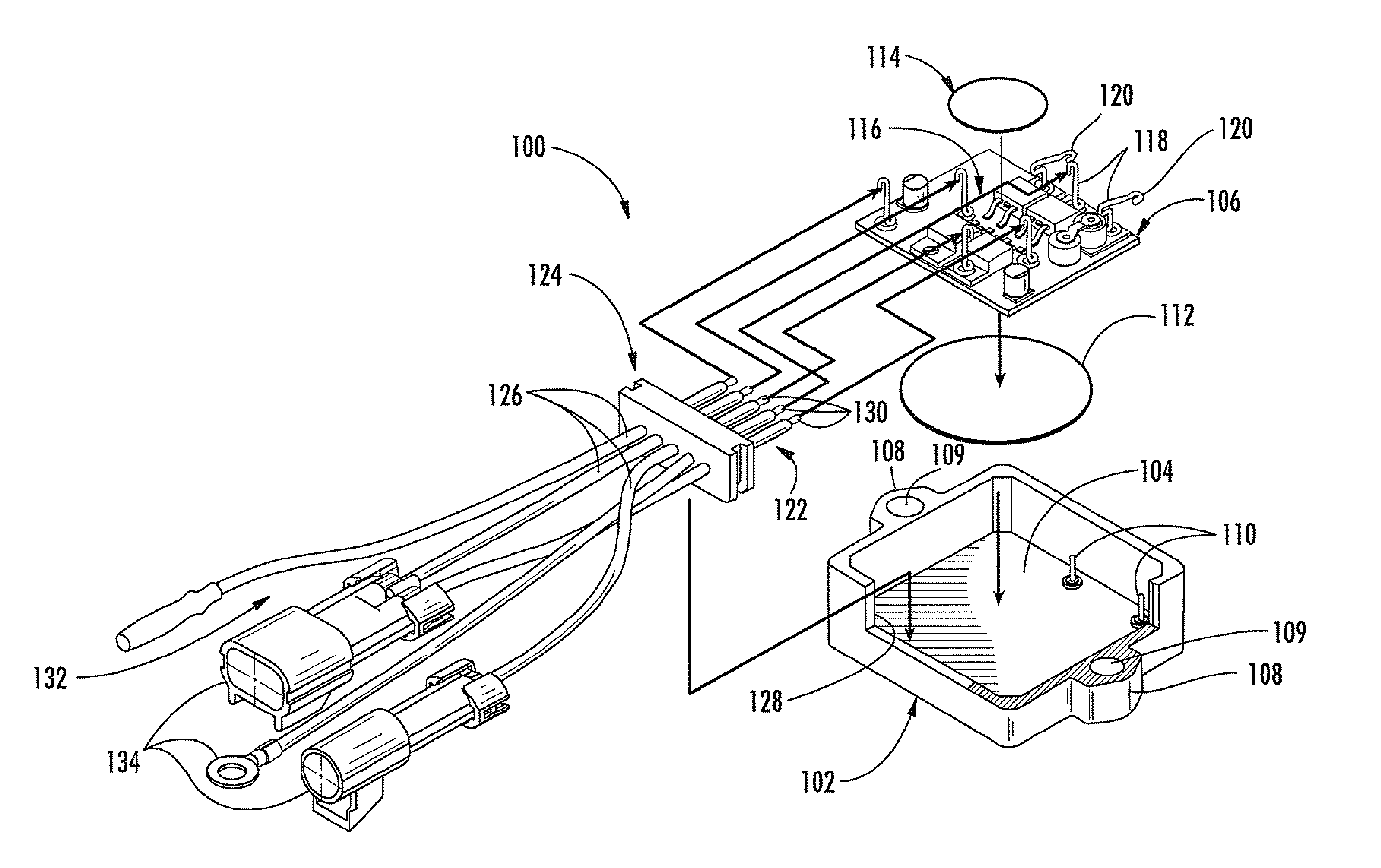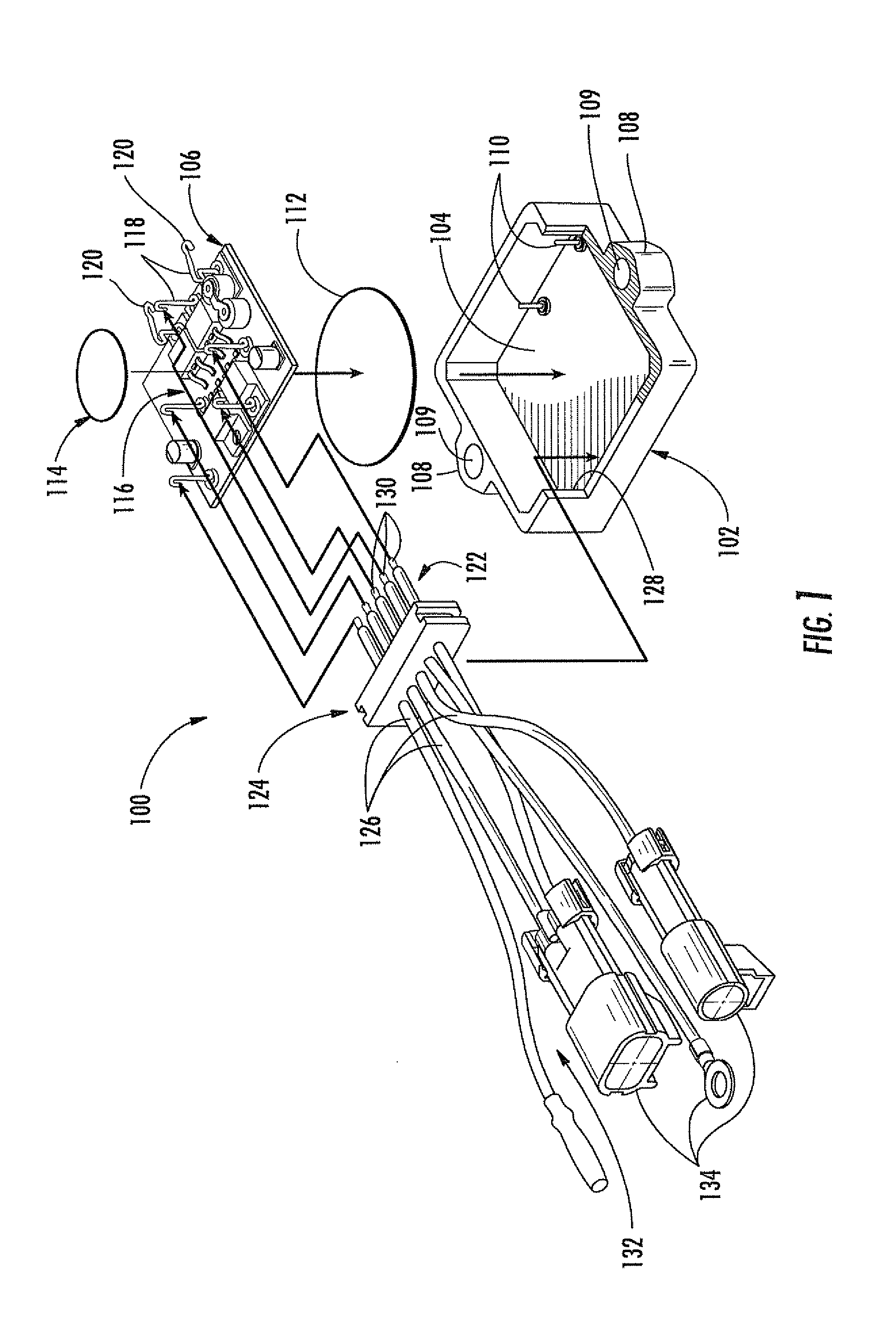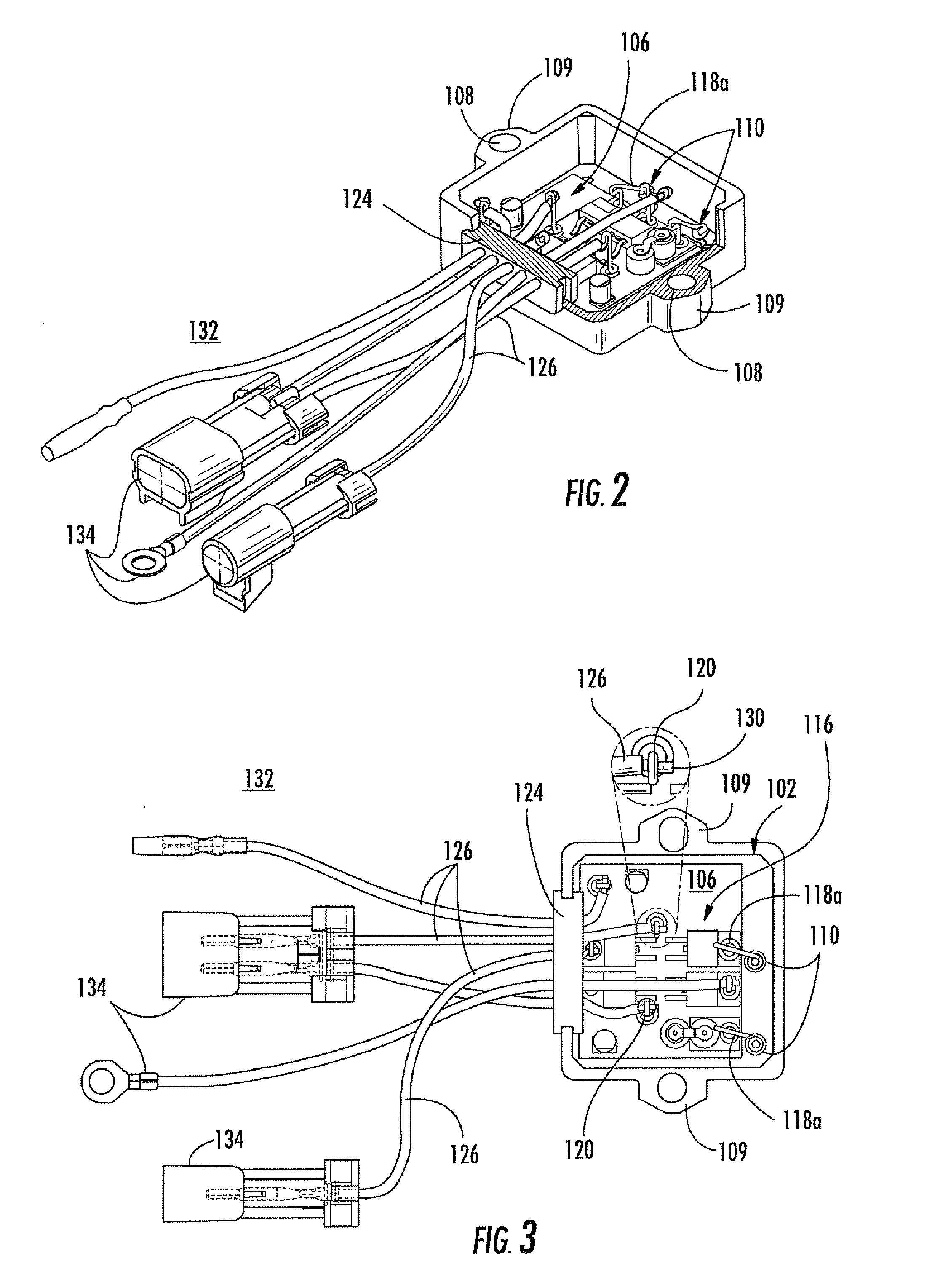Voltage regulator and method using substrate board with insulator layer and conductive traces
a voltage regulator and substrate board technology, applied in the direction of final product manufacturing, electrical apparatus construction details, printed circuit aspects, etc., can solve the problems of excessive heat generation of heat sinks, affecting or destroying voltage regulators, and generating unwanted heat, so as to improve the service life, prolong the operating life, and reduce the effect of operating temperatures
- Summary
- Abstract
- Description
- Claims
- Application Information
AI Technical Summary
Benefits of technology
Problems solved by technology
Method used
Image
Examples
Embodiment Construction
[0039] The present invention will now be described more fully hereinafter with reference to the accompanying drawings, in which preferred embodiments of the invention are shown. This invention may, however, be embodied in many different forms and should not be construed as limited to the embodiments set forth herein. Rather, these embodiments are provided so that this disclosure will be thorough and complete, and will fully convey the scope of the invention to those skilled in the art. Like numbers refer to like elements throughout, and prime notation is used to indicate similar elements in alternative embodiments.
[0040] The present invention advantageously provides a voltage regulator that overcomes the disadvantages of prior art voltage regulators that require large heat sinks to withdraw heat from the voltage regulation circuit, which controls voltage and current supplied from a generator or alternator in different vehicle applications, including automobile, motorcycle and marin...
PUM
 Login to View More
Login to View More Abstract
Description
Claims
Application Information
 Login to View More
Login to View More - R&D
- Intellectual Property
- Life Sciences
- Materials
- Tech Scout
- Unparalleled Data Quality
- Higher Quality Content
- 60% Fewer Hallucinations
Browse by: Latest US Patents, China's latest patents, Technical Efficacy Thesaurus, Application Domain, Technology Topic, Popular Technical Reports.
© 2025 PatSnap. All rights reserved.Legal|Privacy policy|Modern Slavery Act Transparency Statement|Sitemap|About US| Contact US: help@patsnap.com



